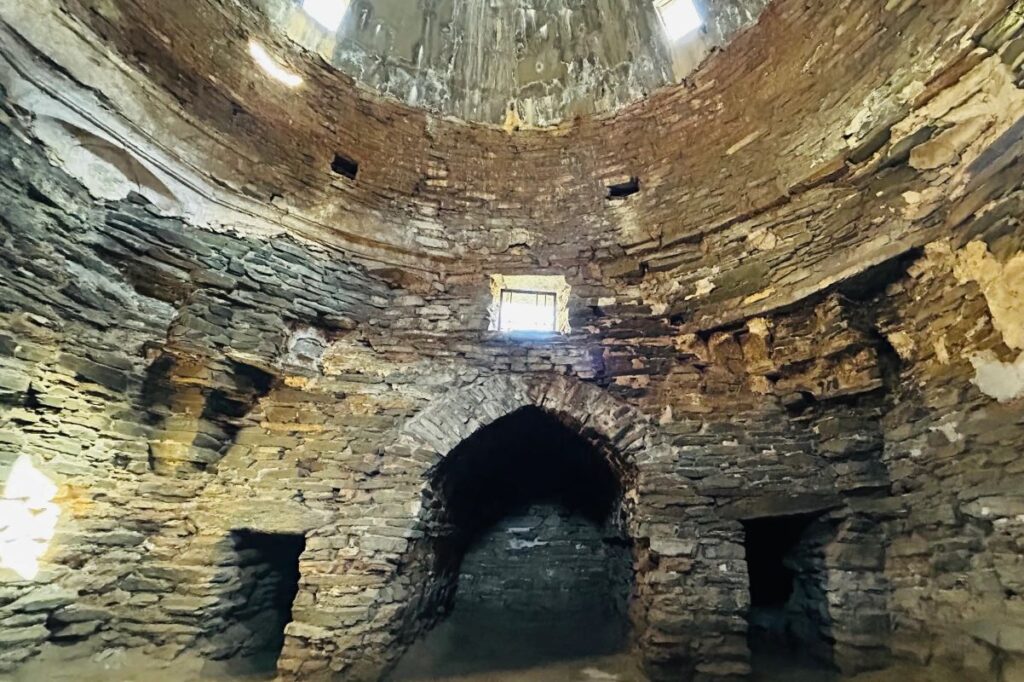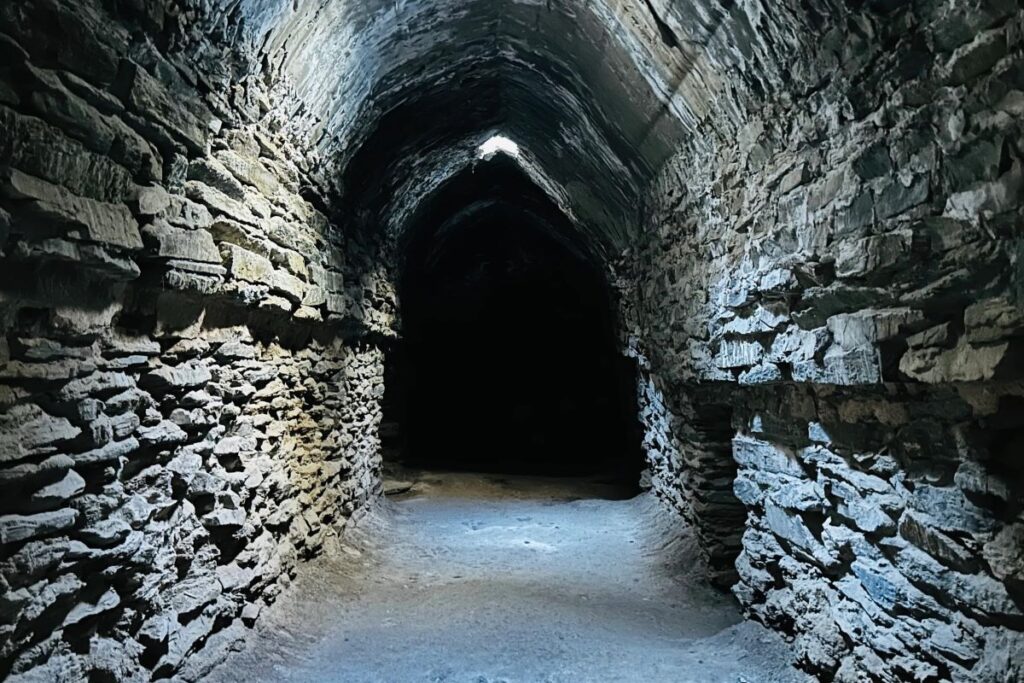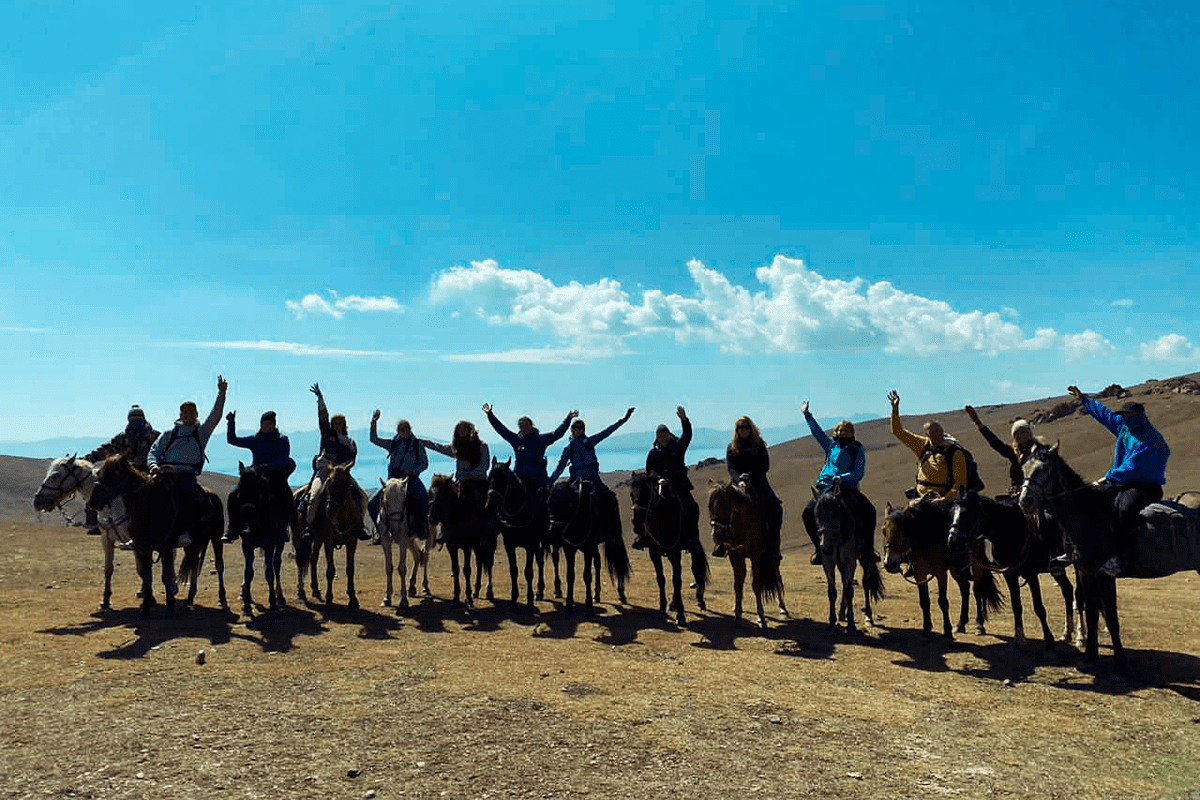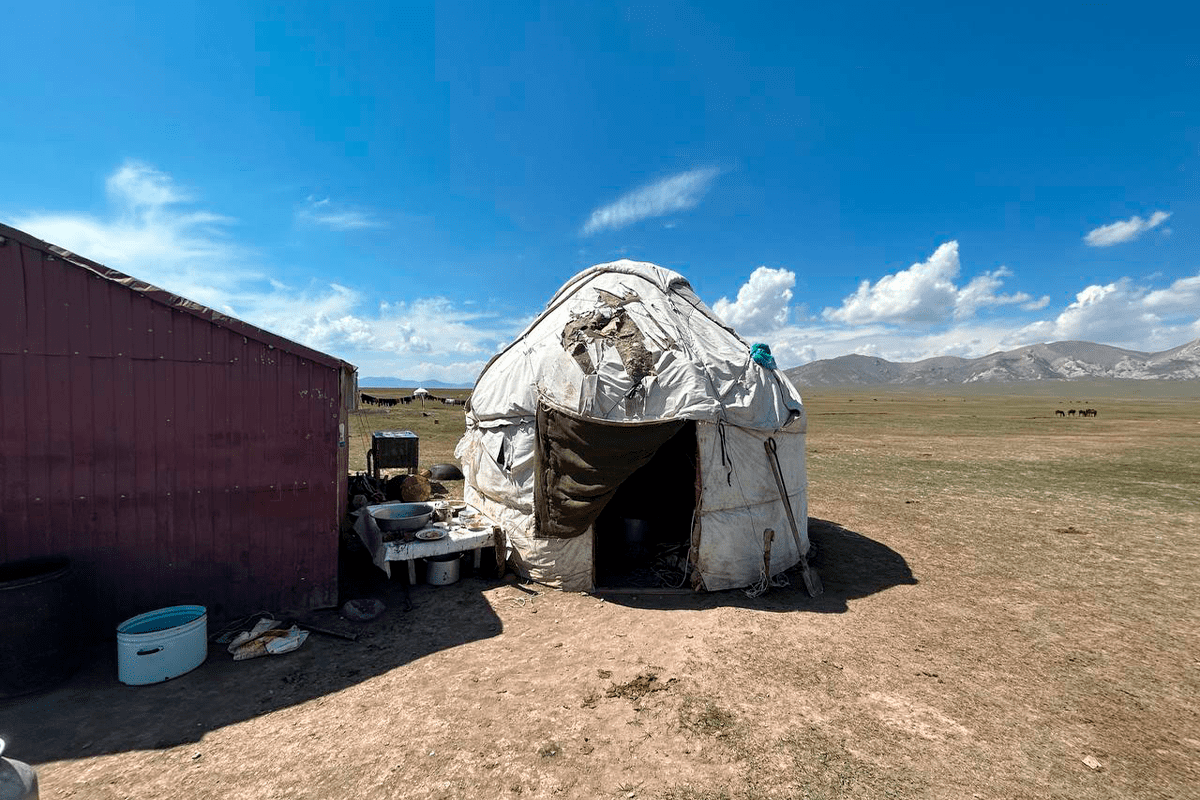Tash Rabat is an ancient caravanserai in the Narin region, not far from the Chinese border. In ancient times it was one of the key points on the Great Silk Road.The caravanserai is located in the southern part of the Atbashi Mountains, 3100 meters above sea level. Numerous caravans carrying eastern goods from China were accommodated here for centuries. The history of Stone Rabat dates back to ancient times. From the 2nd to the 1st century BC. In the 1st and 2nd centuries BC, merchant caravans visited the area. From the 2nd century BC to the 1st century AD and from the 1st century AD to the 2nd century AD, merchant caravans traveled to and from the area. Although the main routes of the Silk Road have changed since then, the region has continued to be used by trade caravans: Between the 10th and 11th centuries, a monastery was built here. According to various theories, Buddhist or Christian, the monastery fell into decay; in the 14th-15th centuries one of the four most important caravanserais in Central Asia was built on this site. It is a unique, perfectly preserved cultural and historical monument in Kyrgyzstan and one of the most important remains of the Great Silk Road.
Tash-Rabat is a caravanserai built in the XV century. It is located 520 km from Bishkek, 125 km from Naryn, 90 km west of the village of At-bashi, 18 km south of the Naryn-Torugart highway, 15 km from the Kara-Koyun gorge, on the left bank of the water.
History.
Tash-Rabat was used by caravans and other travelers following the Great Silk Road through the Central Yakhon-Too; for the first time, Muhammad Haidar mentions Tash-Rabat at the end of the XVI century, and it was built, presumably, in 1408-16.
The building is built of clay slabs with a length of 12 and a width of 7. A long corridor leads to a round hall, the upper part of which has a spherical shape. On both sides of the corridor there are small low doors leading to small square rooms. The building was probably plastered inside and out.


In 1878, the Russian traveler A.M. Fetisov reported that Tash-Rabat is similar to the “Sapar hotel”, where caravans and travelers spend the night for free, and compared it with Rabat on the road from Shymkent to Tashkent; in 1886, orientalist N.L. Zeland noted that Tash-Rabat In 1944 The Tien Shan-Alai archaeological expedition under the leadership of Bernstam explored Tash-Rabat and established that it is a caravanserai. Tash-Rabat gives the impression of a stone building surrounded by one elegant gray house.”
Architectural style.
The caravanserai is built of stone and clay. The facade faces east and has a square shape. The building is about 20 m high and consists of 31 rooms with a rectangular dome.
The premises are divided into three groups:
– Corridor
– Rooms on both sides of the corridor
– Rooms adjacent to the corridor.
Three guards enter the hall through the first door of the corridor. The eastern corner of the wall is supported by a tower. The entrance to the hall is through a long corridor. There are rooms on both sides of the corridor. The hall is located in the center of the building on the west side (length 9.32 m, width 8.35 m) and is connected to rooms and small halls. Its roof is covered by a kumpa (dome) with a diameter of 9.30 m. The enclosed spaces and the kumpa are painted with alabaster and decorated with geometric patterns. The rooms are illuminated by skylights. The roof of the room has a hemispherical shape resembling an arch.
Individual Nomads Life tours are a great opportunity to make a route according to your wishes. We offer a wide range of walking, cycling, equestrian, automobile, ethno-tours and, of course, tours combining two or more types of sightseeing activities.





